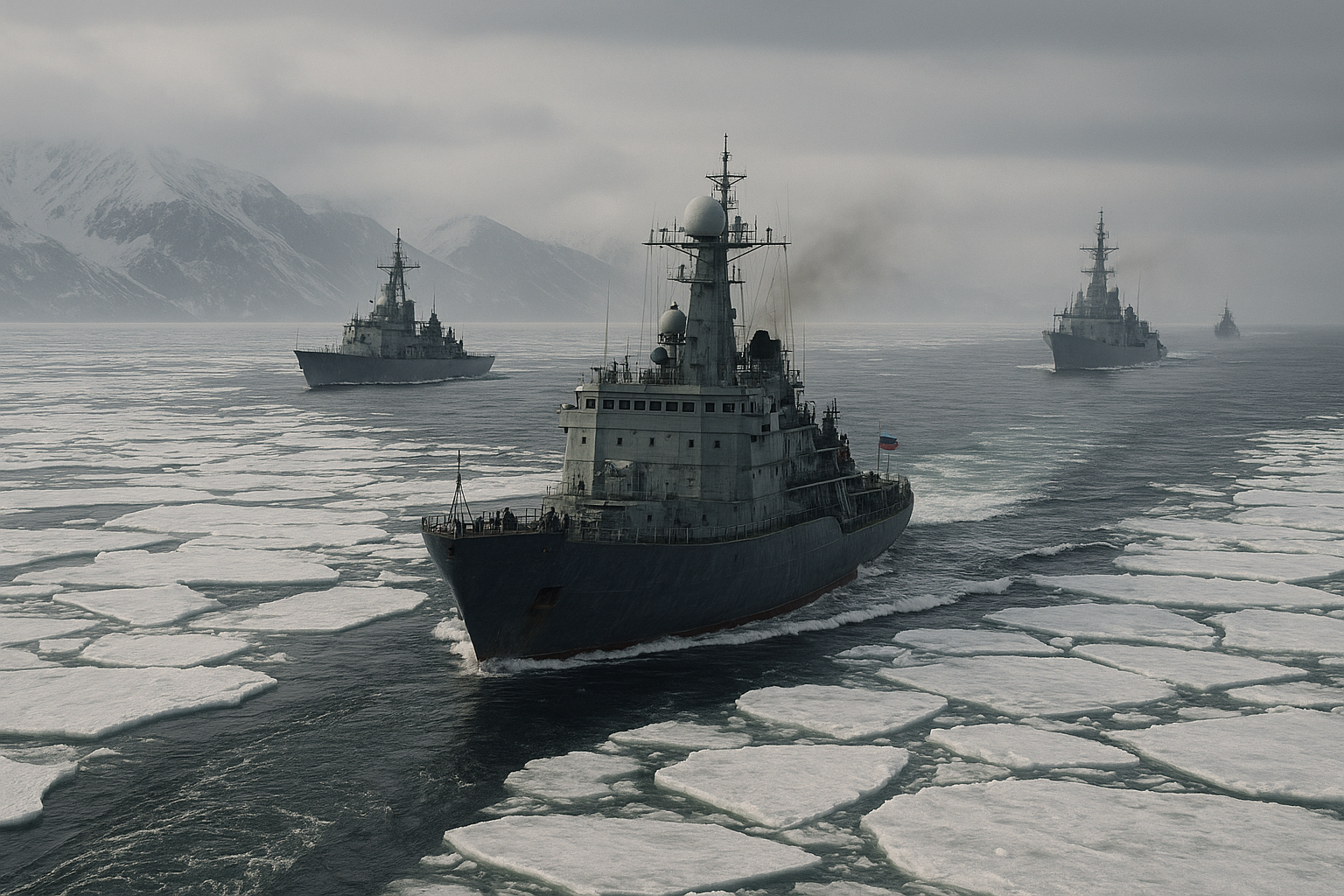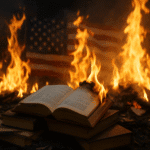The Washington Eye
As the Arctic warms at a rate three times the global average, the once-impenetrable ice cap is giving way to open water, unlocking a new ocean of economic opportunity and strategic peril. The thawing frontier has ignited a 21st-century great game, pitting Russia and China against the United States and its allies in a high-stakes competition for the region’s vast resources and strategic waterways. But as warships and icebreakers converge on the top of the world, the collapse of regional diplomacy has raised the specter of a new “Ice Curtain” descending, creating a volatile environment where the risk of conflict is higher than at any point since the Cold War.
For decades, the Arctic was a model of international cooperation, a “zone of peace” where science and environmental protection took precedence over military posturing. That era of “Arctic exceptionalism” is definitively over. The catalyst is a dramatic environmental transformation: summer sea ice is shrinking by 13% per decade, and 95% of the region’s thickest, oldest ice has vanished in the last 40 years. Scientists project the Arctic Ocean will be functionally “ice-free” in the summer months before 2050, a change that is not only accelerating global warming but also opening up two immense economic prizes: shorter shipping routes and a treasure trove of untapped resources.
The allure of these prizes is immense. The Northern Sea Route (NSR) along Russia’s coast could cut shipping times between Asia and Europe by up to 50% compared to the Suez Canal. Beneath the seabed, the region is estimated to hold 13% of the world’s undiscovered oil and 30% of its undiscovered natural gas, alongside vast deposits of critical minerals like rare earth elements, zinc, and nickel.
However, the competition is unfolding on a dangerously uneven playing field. Russia, which controls over half the Arctic coastline, has established a dominant position through decades of investment. It operates the world’s only fleet of nuclear-powered icebreakers—more than 40 vessels in total—giving it year-round access to the harshest corners of the region. Moscow is aggressively militarizing its Arctic coast, reopening Cold War-era bases and deploying new, missile-armed icebreakers like the Ivan Papanin, a warship capable of smashing through thick ice while carrying Kalibr cruise missiles.
Russia is not acting alone. It has forged a deep strategic partnership with China, which has declared itself a “near-Arctic state” with ambitions to become a “major polar power”. Through its “Polar Silk Road” initiative, Beijing is investing heavily in Russian energy projects and port infrastructure. This partnership gives China a secure route for resources that bypasses maritime chokepoints controlled by the U.S. Navy, while joint Russo-Chinese naval exercises near the coast of Alaska signal their growing military reach into North America’s backyard.
In stark contrast, the United States and its allies face a critical “capability-commitment gap.” While American strategic documents now recognize the threat, its physical presence is lagging dangerously. The U.S. Coast Guard operates just one heavy icebreaker, the USCGC Polar Star, a vessel commissioned in 1976. A program to build new Polar Security Cutters is years behind schedule and billions over budget, forcing the Coast Guard to make a stop-gap purchase of a commercial vessel in 2024 as a “bridging strategy”.
Canada, whose identity is deeply tied to its northern territory, is similarly playing catch-up. Ottawa’s primary concern is asserting its sovereignty over the Northwest Passage (NWP), which it claims as “internal waters”—a position the U.S. disputes, viewing the passage as an “international strait”. While Canada has begun construction on two powerful new polar icebreakers, they are not expected to enter service until the early 2030s.
This vast asymmetry in capabilities means that for the foreseeable future, the de facto rules in the most economically vital parts of the Arctic are being written by Moscow and Beijing.
Compounding the tension is the breakdown of regional governance. The Arctic Council, the primary forum for cooperation among the eight Arctic states, has been paralyzed since the other seven members paused cooperation with Russia following its 2022 invasion of Ukraine. This has created a dangerous communications vacuum, replacing dialogue with military posturing.
“The Arctic Council lacks the capacity to substantively respond to crises,” one academic analysis concluded, noting that the very foundation of post-Cold War cooperation has been shattered.
With diplomatic channels frozen, long-dormant legal disputes have the potential to become active flashpoints. The disagreement over the Northwest Passage, managed for decades by a pragmatic 1988 agreement to “agree to disagree,” could easily reignite as the waterway becomes more navigable for commercial and military vessels from non-allied nations like China.
Analysts now predict the most likely future is a “stable but bifurcated Arctic,” divided by a new “ice curtain”. In this scenario, a Russo-Chinese bloc dominates the Eurasian Arctic, controlling the Northern Sea Route and its resources. Meanwhile, a Western bloc led by the U.S. and Canada scrambles to secure the North American Arctic. While all-out war is considered unlikely by experts, this tense, managed competition carries a high risk of miscalculation and localized conflict at the seams, particularly in the strategic Bering Strait.
The great melt has transformed the top of the world from a frozen wasteland into a central theater of 21st-century geopolitics. The era of the Arctic as a peaceful, scientific preserve is over. A new, colder reality is setting in, and for the West, the race is on to build the steel hulls and project the power needed to secure its interests on a rapidly thawing frontier.















